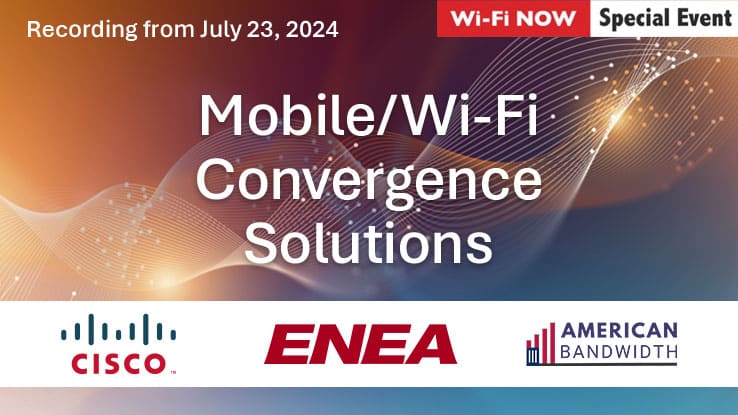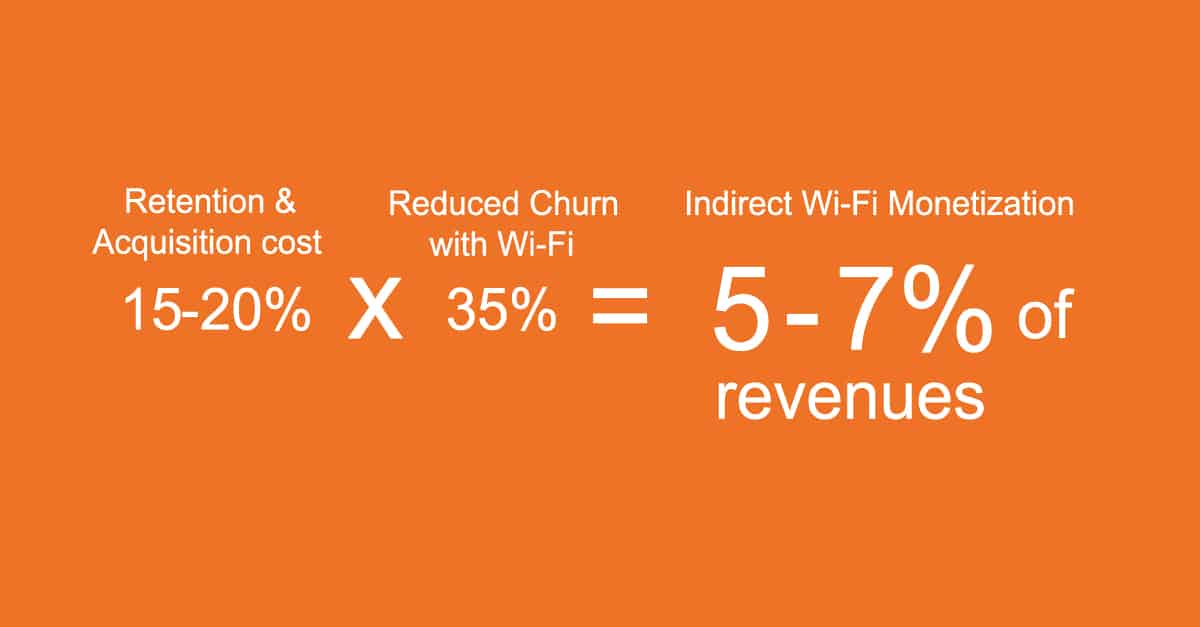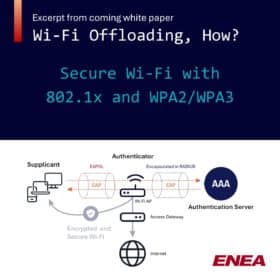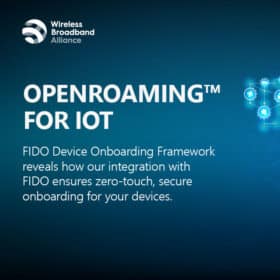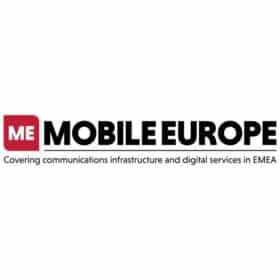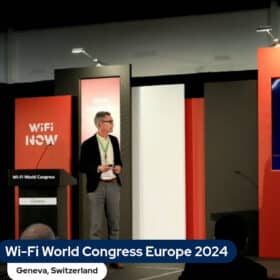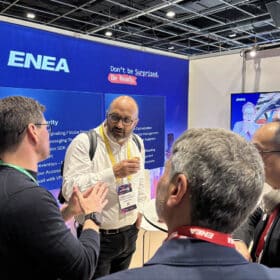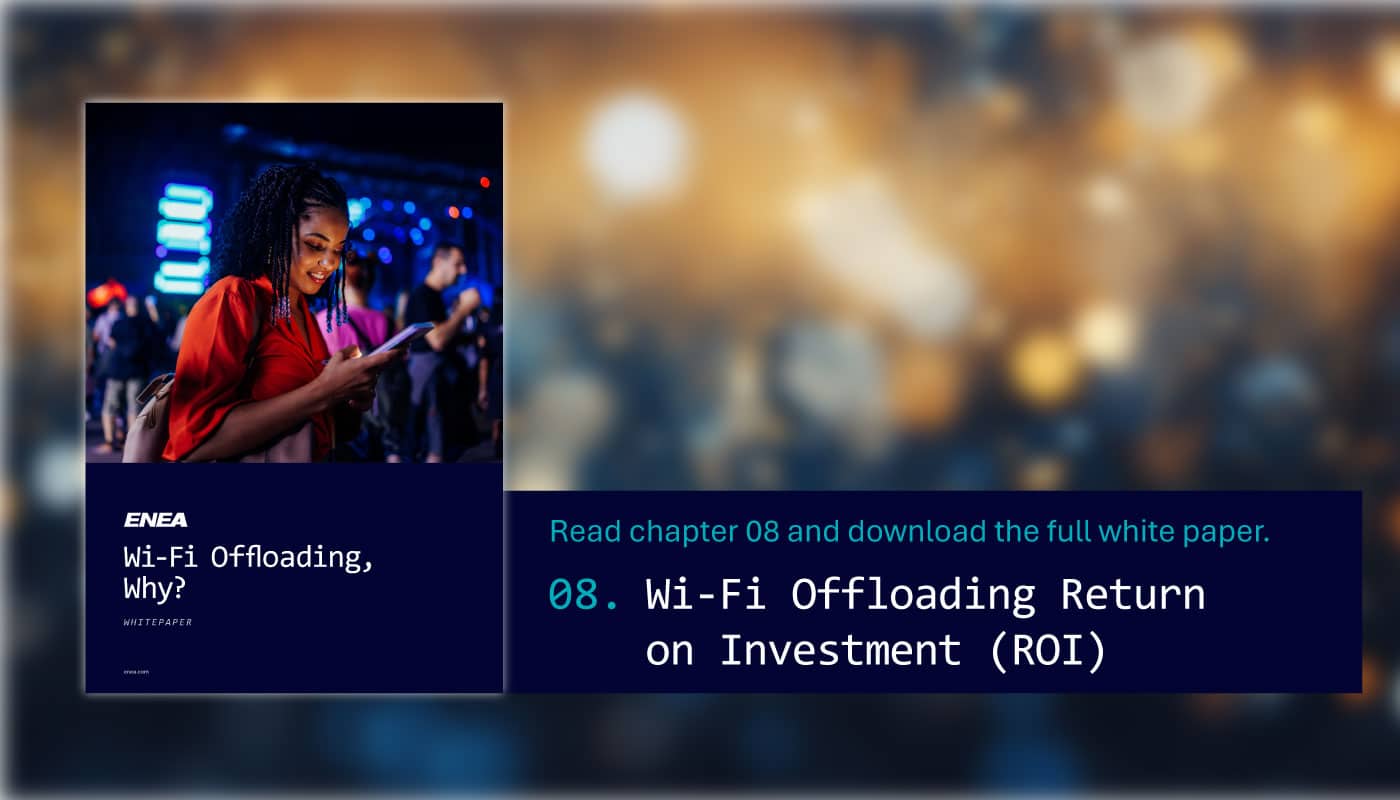
Wi-Fi Offloading, Why? – Chapter 8
Wi-Fi Offloading Return on Investment (ROI)
A general ROI calculation model for Wi-Fi Offloading is very challenging as there are many different parameters to consider, and the mobile operators’ monetization of the actual offloading is always indirect. This indirect monetization revolves around cost savings and satisfied subscribers, reducing churn.
White Paper: Wi-Fi Offloading – Why?
This is an excerpt from our white paper, Wi-Fi Offloading – Why? The full white paper is available here if you like what you read. Don’t hesitate to contact us if you have any questions.

A more granular ROI modeling needs to be run for each mobile operator because conditions differ for different markets, the system integration capabilities differ between operators, the cost and revenue-share arrangements between the operator and the location/venue may vary, etc. However, the success of Wi-Fi Offloading spans from operators that rely entirely on third-party Wi-Fi networks to operators that deliver fully managed Wi-Fi services to their business-to-business (B2B) customers.
Managed B2B Wi-Fi Drives Wi-Fi Offloading ROI

An operator-managed B2B Wi-Fi service in a Wi-Fi Offloading context is a Win x 5:
- End-users get secure and seamless Wi-Fi connectivity (free of charge).
- Business Customers get analytics and the opportunity to engage with end-users.
- The opereator B2B sales get a profitable service.
- The operator consumer business department get reduced churn.
- Network operations get indoor coverage.
As discussed, B2B Wi-Fi services complemented with an additional SSID for Wi-Fi Offloading is the only mobile indoor coverage solution that is a profit center rather than a cost center.
Generally, the industry sentiment is that Wi-Fi is cheaper per delivered GB indoors and more energy-effective. But, even though the initial cost (CAPEX) and the cost of the daily operation (OPEX) in some scenarios can be more or less the same for cellular indoor solutions and Wi-Fi, it is hard to escape the fact that cellular only drives cost, whereas Wi-Fi can drive direct revenue.
Operators that deliver managed B2B guest Wi-Fi services can compete effectively with other players delivering Wi-Fi services as the indirect monetizationof Wi-Fi Offloading is so great that they do not need as high margins on the B2B guest Wi-Fi service as their competitors do. As discussed, it could even make sense to subsidize the Wi-Fi service at self-cost at some critical locations. So, when using B2B Wi-Fi as a vehicle for Wi-Fi Offloading, the worst-case scenario is that it will be a cost-saving compared to building indoor cellular coverage. For most sites, the B2B Wi-Fi service will be profitable. You will be paid to get indoor coverage for your subscribers.
Take a Holistic Customer Approach
It may, of course, make sense to provide both cellular and Wi-Fi indoor coverage. But if you have to choose, Wi-Fi has the advantage of covering more use cases. The venue may need connectivity for other things, such as computers, servers, billboards, payment terminals, and printers. Looking at the guest experience, many devices, such as laptops, tablets, and smartwatches, have no cellular connectivity, while all mobile phones have Wi-Fi support. This dynamic makes Wi-Fi connectivity necessary for a holistic customer approach and happy users.
Indirect Monetization of Wi-Fi Offloading
Although a more granular ROI calculation is required for each individual case, analyzing publicly available data can give a hint of the general ROI potential of Wi-Fi Offloading. Some of the data points below are old now, but we still think they have aged well, and nothing significant has happened in the market that would change this.
Wi-Fi Services Reduce Subscriber Churn
Gaining new subscribers is costly, and losing them is even more expensive. Wi-Fi has become the last piece of the operator’s customer retention puzzle. In 2014, Shaw Communications’ CEO, Brad Shaw, said, “The percentage of customers discontinuing their subscription is 35 percent lower among customers who have signed up for Shaw Go Wi-Fi than among those who haven’t.”
This number also agrees well with a 2023 study from Ericsson Consumer Labs, which states that there is a threefold higher probability of users churning if they have had a bad connection at indoor locations such as airports or entertainment venues.
Cost of Customer Acquisition and Retention
A 2016 study by analyst Tefficient shows that, on average, mobile operators in mature markets spend 15-20% of service revenues on subscriber
acquisition costs (SAC) and subscriber retention costs (SRC).
Since most of these mature market operators didn’t grow and still have low single-digit growth numbers, another way to put it is that it costs 15-20% of service revenues every year to more or less stand still, i.e., close the year with the same number of customers as at the beginning of the year.
Calculating the Indirect Monetization of Wi-Fi Offloading
Do you not believe in this calculation?
This is a volume game, so even if you reduce the input parameters to what makes sense to your situation, it will still translate into considerable savings.
If we believe that Wi-Fi services can reduce churn by 35% and that the cost of customer acquisition and retention is 15-20% of revenues, then the potential indirect monetization of Wi-Fi Offloading would be 5-7% of a mobile operator’s revenues.
This would potentially translate into hundreds of millions of USD yearly for an average mobile operator.
Recorded session from July 23, 2024
Solutions for mobile / Wi-Fi convergence
As the mobile industry enters a new and much less profitable era, Wi-Fi is growing in importance as an effective, cost-efficient, and necessary complementary solution.
View this Wi-Fi Now special event recording from July 23 with Cisco, American Bandwidth, and Enea, where we explore all the current convergence offerings and their status.
When: Available on-demand.
Duration: Approximately 2 hours including presentations, panel Q&A, and audience Q&A.
